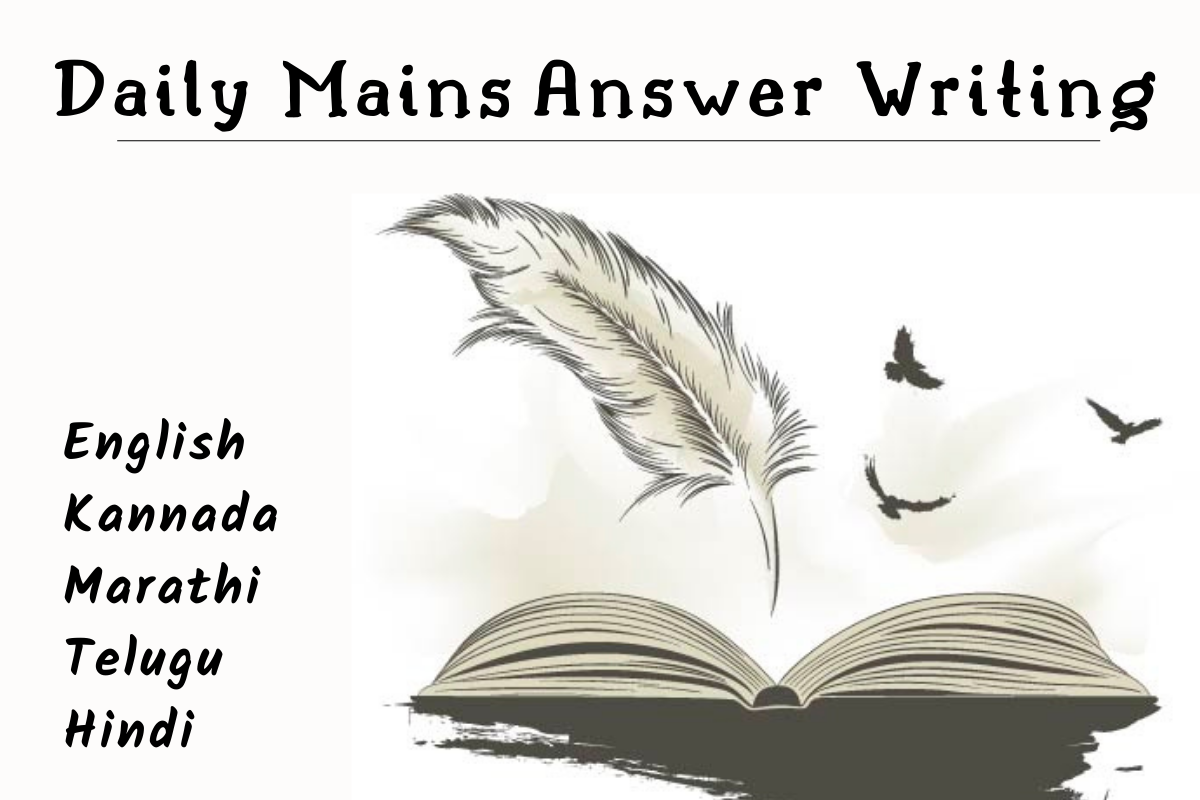18 OCTOBER 2022 – MAINS DAILY QUESTIONS & MODEL ANSWERS:
Q1. Why is it necessary to link the voter identification card and the Aadhar card? Discuss.
· Paper & Topic: GS III à Government Policies and Interventions related issues
· Model Answer:
· Why are voter ID and Aadhaar related?
· The State Legislature and Parliament elections are conducted using election records from each voting place, and these lists frequently have factual and typographical problems. Accuracy improves and de-duplication is made simpler when the rolls are linked to Aadhaar numbers. The PAN number debate was presented as an example by the Supreme Court.
· By accelerating the process of adding names to the rolls, the connecting mechanism would benefit first-time voters. Many other government services, including e-Shram UAN numbers and passports, already call for Aadhaar authentication.
· Voters must apply to the electoral registration officers to have their names added to or removed from records when they move to new addresses. Poor immigrants typically decide against having their names added to the rolls in their new town due to how difficult this process is for them. Integrating EPICs with Aadhaars could be the answer to this issue.
· Concerns related to:
· Due to the fact that Aadhaar only serves as documentation of residency and not citizenship, adult residents who are only citizens are only permitted to vote.
· It’s not always a smart idea to integrate Aadhaar with the voter list for verification. The Aadhaar database allegedly has more self-reported faults than the vote database, according to the Internet Freedom Foundation.
· How do we approach it?
· Regular elections and a respectably high voter turnout are two clear successes for the Indian political system. The EVMs’ straightforward operation and ECI’s efforts to boost voter participation both contributed to the high turnout.
· The ECI is needed to update the electoral rolls on a regular basis due to the rising immigrant population in metropolitan regions and the increase in eligible voters as a result of demographic changes. Due to the repeated election cycles, the registration process has been shortened, and voters can now register using identification that verifies their address and age.
· Conclusion:
· By tying voter identity to Aadhaar for voter authentication, voter turnout and electoral roll accuracy may both increase. However, given the lack of a strong data protection policy, this should be optional.
Q2Throw light on the Sangam Age’s socio-economic environment.
- Paper & Topic: GS IàArt and Culture
- Model Answer:
· The Sangam Age is a significant period in South Indian history. According to legend, Tamil Nadu’s prehistoric past was home to three Sangams, also known as Muchchangam or Academies of Tamil Poets. These Sangams were able to develop thanks to the Pandyas’ royal support. third century B.C. to the present The Sangam Period lasted in South India (the area south of the rivers Krishna and Tungabhadra) until the third century A.D.
· Sangam Age Society:
· Kurinji (hilly roads), Mullai (pastoral), Marudam (agricultural), Neydal (coastal), and Palai are Tolkappiyam’s five geographical divisions (desert).
· Each of these five distinct groups of people had a main line of work and a god they held in high regard.
· The main deity, Murugan, is renowned for his skill at both beekeeping and hunting.
· Mayon (Vishnu), the principal god, is well renowned for managing cattle herds and transacting in dairy goods.
· Marudam, the principal deity, works primarily in agriculture.
· Varunan is heavily concerned in fishing and salt production, hence Neydal is the main deity.
· The supreme god Korravai, also referred to as Palai, is the principal target of thieves.
· Tolkappiyam is another name for the four castes arasar, anthanar, vanigar, and vellalar. “Arasar” alludes to the aristocracy.
· The Anthanars had an impact on the Sangam’s politics and theology. The Vanigars were businesspeople.
· Sangam Age Economy:
· Agriculture was the sector that generated the most jobs overall. Rice was the crop that was cultivated the most.
· Other crops grown included ragi, sugarcane, cotton, pepper, ginger, turmeric, cinnamon, and a number of different fruits.
· Jackfruit and pepper were reported to be favourites of the Chera people. Paddy was the main crop grown during the Chola and Pandya eras.
· The Sangam era’s handicrafts were well-liked. Weaving, woodworking, welding, shipbuilding, and creating jewellery out of beads, stones, and ivory are a few of them.
· There was a considerable demand for these products throughout the Sangam era as a result of expanding domestic and international trade.
· The highest standards were followed in the spinning and weaving of silk and cotton fabrics.
· The fabric mentioned in the poetry, cotton, is as light as a snake’s slough or a steam mist.
· The cotton clothing produced in Uraiyur was in high demand, particularly in the West.
· Both local and foreign trade were effectively managed during the Sangam Age.
· Conclusion:
· The Sangam Age is a key era in South Indian history. The Sangam period or age, and notably the third Sangam period, was a historical era that lasted roughly from the sixth century BCE to the third century CE in ancient Tamil Nadu, Kerala, and parts of Sri Lanka. Its name was inspired by the famed Maduraian Sangam schools of poets and intellectuals.

